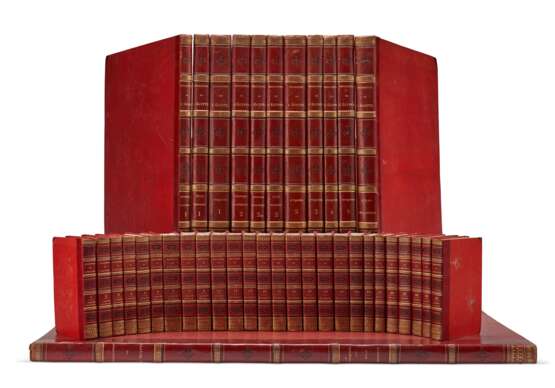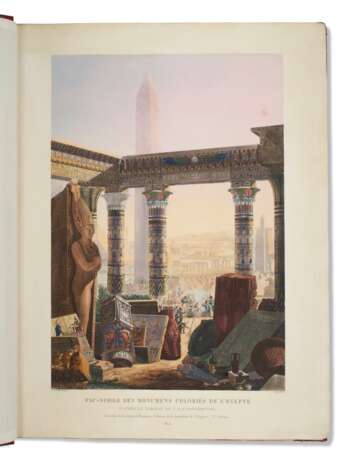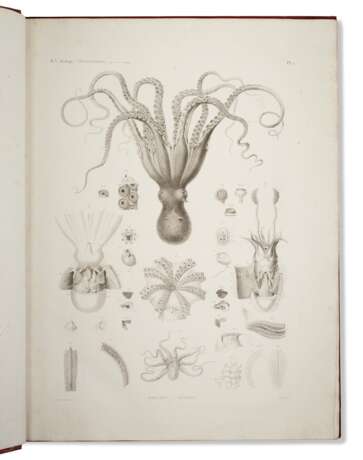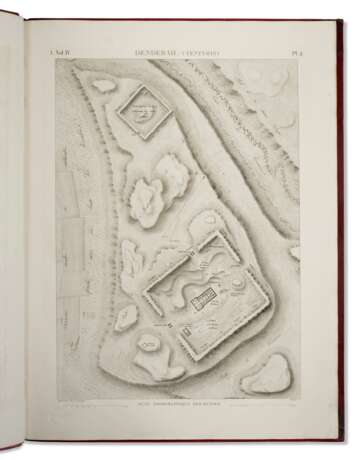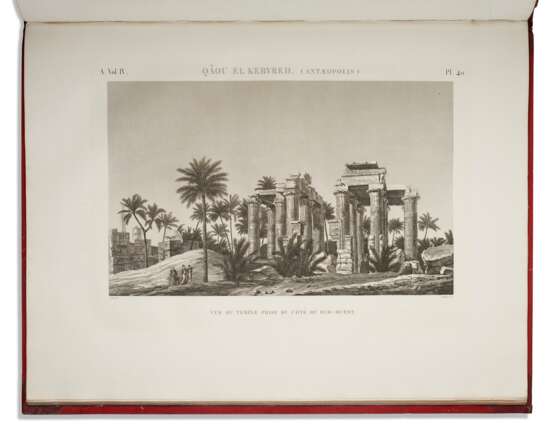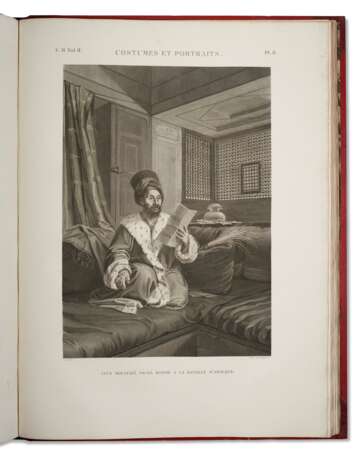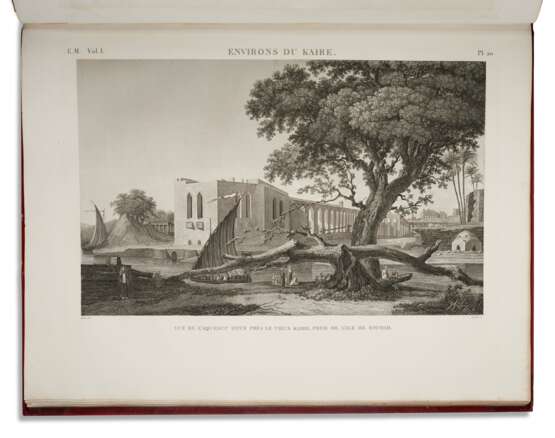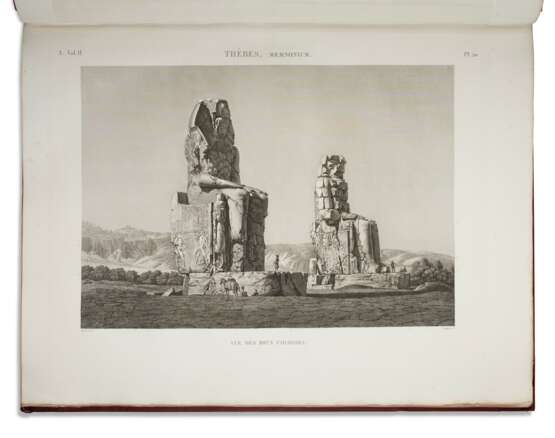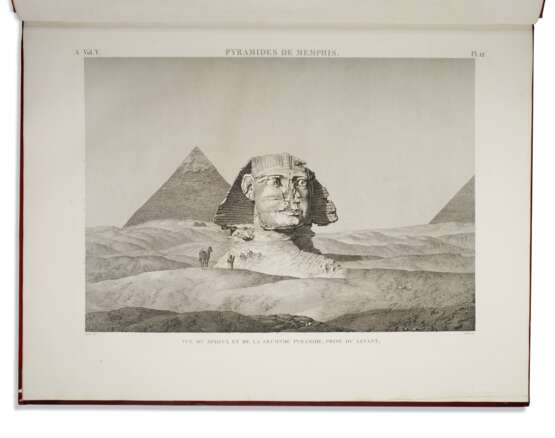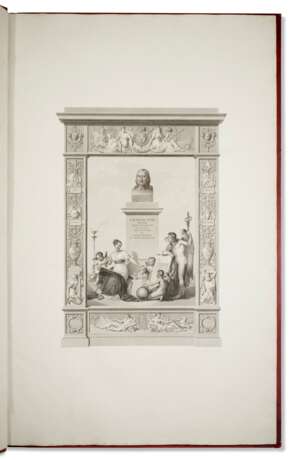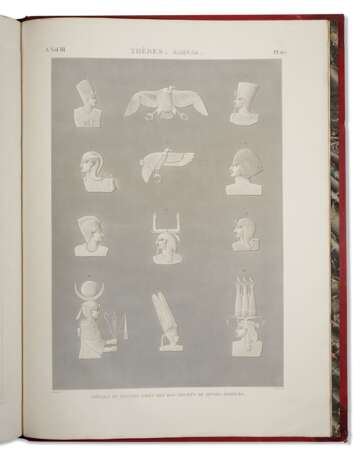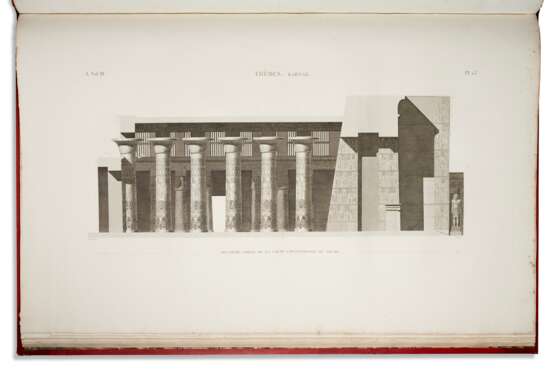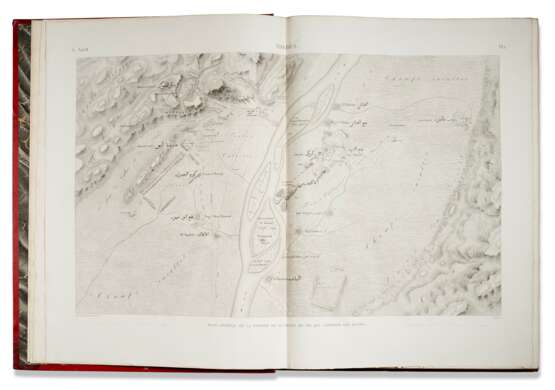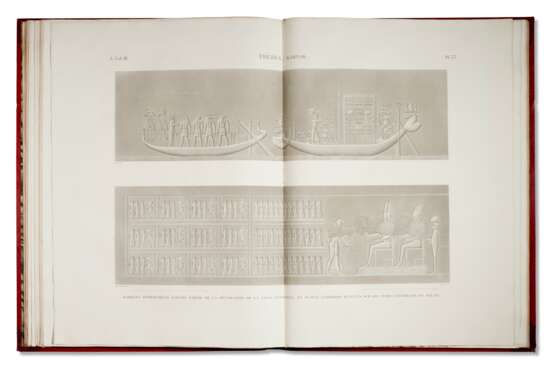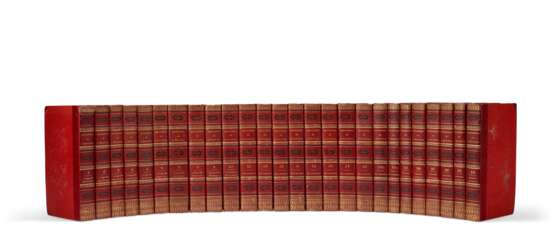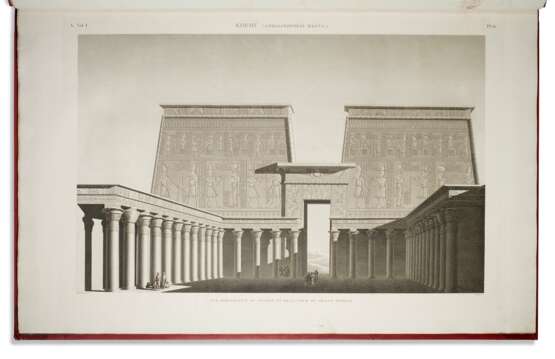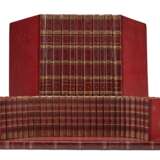ID 627542
Lot 52 | Description de l'Egypte
Estimate value
$ 150 000 – 250 000
The Baron de Nervo's copy: a rare complete set of the second edition, handsomely bound with custom display cabinet. This work represents the first comprehensive description of ancient and modern Egypt, and an extraordinary result from Napoleon’s expedition to Egypt of 1798-1801.
38 volumes, comprising 24 text volumes bound in 26 (vol. 18 in three parts), octavo (216 x 130 mm); 11 plate volumes, folio (703 x 532 mm); and one elephant folio atlas volume of large-format plates (1100 x 690 mm). Engraved frontispiece with contemporary coloring, 901 engraved plates (of 902, lacks plate number 29 to Antiquités vol. 3), engraved title and 2 explanatory plates to Atlas Géographique, engraved dedication leaf to Louis XVIII, text volumes with 47 engraved plates and maps and 34 tables. Expedition blindstamps in the corner of most engravings. (Three plates in the grand monde atlas with foxing, scattered closed tears which are nearly all to folds of folding plates). Uniform contemporary red half morocco, spines stamped in gilt and black (some light wear and tear to spine ends, other mild rubbing). Custom wooden cabinet with sliding shelves and lectern (a few small chips to drawers). Provenance: Le Baron de Nervo, likely Olympe-Christophe, first baron of Nervo, 1765-1835, French politician, but this bookplate also used by his son and grandson (armorial bookplates).
The plate volumes of this second edition contain the same plates as the first, but remain uncolored. The individual parts are:
Antiquités: Text: 10 volumes. Plates: Five volumes. Half-title in vol. 1. Hand-colored engraved frontispiece and 418 (of 419, lacking plate 29 to plate vol. 3). This edition does not contain plates a-f, not listed in the 'table de planches' in the last text volume for this part. The large map was outside the plate count in the first edition but here is plate 1 in volume 1. This part describes not only the ruins, with which Europeans where already familiar, but also the objects excavated there, including the Rosetta Stone. This collection of portable objects was to have been removed to France but at embarkation William Hamilton (agent to Lord Elgin) and E.D. Clarke confiscated them; the majority survive today at the British Museum. The quality of the plates was much enhanced by the use of an engraving machine invented by Conté, which is itself illustrated in the succeeding part.
Etat Moderne: Text: 10 volumes. (published as tomes 11-18; tome 18 in three parts). Plates: Two volumes. with 179 engraved plates on 171 sheets. This part describes the architecture of Egypt, particularly Cairo, subsequent to the Arab invasion in the 7th century. Other sections detail Arts et Métiers (31 plates), Costumes et Portraits (11), Vases, Meubles et Instruments (13), and Inscriptions Monnoies et Médailles (29 on 21 sheets).
Histoire Naturelle: Text: 6 volumes. Plates: Three volumes. (numbered 1, 2 and 2bis) with 244 engraved plates. The principal sections of this part comprise geology and physical geography by de Rozière, mammals by Geoffroy-Saint-Hilaire, Jules-César Savigny and Audouin, flora by Rafeneau-Didile. The many artists who contributed drawings to this part include Barraband, Prêtre, Pierre Joseph Redouté, and Turpin.
Atlas géographique. Engraved title, engraved 'key' map, engraved characters, a general map on 3 sheets and a detailed map on 47 printed sheets. The origin of this survey was the inadequacy of d'Anville's map dating from 1765. The new survey conducted under Jacotin included not only Egypt but Sinai, Palestine and much of modern Lebanon, as an offshoot of the Syrian campaign. The maps where ready for publication by 1818, but, presumably for security reasons, they remained with the Dépot de Guerre until about 1830.
The elephant folio “grand monde” volume in the present set contains fine views and plates for the Antiquités and Etat Moderne plate volumes as well as the engraved dedication to Louis XIV and one folding plate, ““Plate A, Tableau Synoptique des Constellations,” from vol. 1 of the Antiquités Mémoires.
| Artist: | William Shakespeare (1564 - 1616) |
|---|---|
| Applied technique: | Pencil |
| Artist: | William Shakespeare (1564 - 1616) |
|---|---|
| Applied technique: | Pencil |
| Address of auction |
CHRISTIE'S 8 King Street, St. James's SW1Y 6QT London United Kingdom | |
|---|---|---|
| Preview |
| |
| Phone | +44 (0)20 7839 9060 | |
| Buyer Premium | see on Website | |
| Conditions of purchase | Conditions of purchase |
